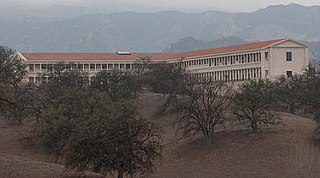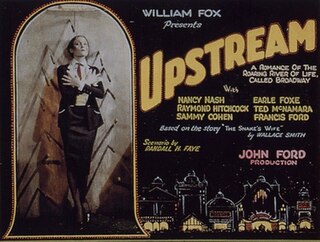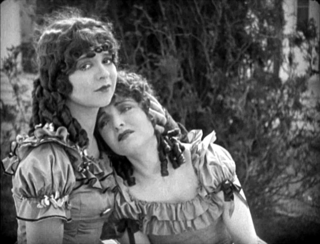The United States National Film Preservation Board (NFPB) is the board selecting films for preservation in the Library of Congress' National Film Registry. It was established by the National Film Preservation Act of 1988. The National Film Registry is meant to preserve up to 25 "culturally, historically or aesthetically significant films" each year; to be eligible, films must be at least 10 years old. Members of the Board also advise the Librarian of Congress on ongoing development and implementation of the national film preservation plan.

Leonard Charles Huia Lye was a New Zealand artist known primarily for his experimental films and kinetic sculpture. His films are held in archives including the New Zealand Film Archive, British Film Institute, Museum of Modern Art in New York City, and the Pacific Film Archive at University of California, Berkeley. Lye's sculptures are found in the collections of the Whitney Museum of American Art, the Art Institute of Chicago, the Albright-Knox Art Gallery and the Berkeley Art Museum. Although he became a naturalized citizen of the United States in 1950, much of his work went to New Zealand after his death, where it is housed at the Govett-Brewster Art Gallery in New Plymouth.

Film preservation, or film restoration, describes a series of ongoing efforts among film historians, archivists, museums, cinematheques, and non-profit organizations to rescue decaying film stock and preserve the images they contain. In the widest sense, preservation assures that a movie will continue to exist in as close to its original form as possible.

The National Film Preservation Foundation (NFPF) is an independent, nonprofit organization created by the U.S. Congress to help save America's film heritage. Growing from a national planning effort led by the Library of Congress, the NFPF began operations in 1997. It supports activities nationwide that preserve American films and improve film access for study, education, and exhibition. The NFPF's top priority is saving orphan films, so called because they are not protected by commercial interests and are unlikely to survive without public support. Through its grant programs, the NFPF has helped archives, historical societies, libraries, museums, and universities from all 50 states preserve American films and make them available to the public.
Preservation of documents, pictures, recordings, digital content, etc., is a major aspect of archival science. It is also an important consideration for people who are creating time capsules, family history, historical documents, scrapbooks and family trees. Common storage media are not permanent, and there are few reliable methods of preserving documents and pictures for the future.

The Packard Humanities Institute (PHI) is a non-profit foundation, established in 1987, and located in Los Altos, California, which funds projects in a wide range of conservation concerns in the fields of archaeology, music, film preservation, and historic conservation, plus Greek epigraphy, with an aim to create tools for basic research in the Humanities.
The Academy Film Archive is part of the Academy Foundation, established in 1944 with the purpose of organizing and overseeing the Academy of Motion Picture Arts and Sciences' educational and cultural activities, including the preservation of motion picture history. Although the existing incarnation of the Academy Film Archive began in 1991, the Academy of Motion Picture Arts and Sciences acquired its first film in 1929.

The King of the Kongo (1929) is a Mascot film serial, and was the first serial to have sound, although only partial sound rather than the later "All-Talking" productions with complete sound. The first episode was a "three reeler" with the remaining nine episodes being "two reelers".

Upstream is a 1927 American comedy film directed by John Ford. A "backstage drama", the film is about a Shakespearean actor and a woman from a knife-throwing act. The film was considered to be a lost film, but in 2009 a print was discovered in the New Zealand Film Archive.

The Ministry for Culture and Heritage is the department of the New Zealand Government responsible for supporting the arts, culture, built heritage, sport and recreation, and broadcasting sectors in New Zealand and advising government on such.
The 45th National Society of Film Critics Awards, given on 8 January 2011, honored the best in film for 2010.

The White Shadow, also known as White Shadows in the United States, is a 1923 British drama film directed by Graham Cutts and starring Betty Compson, Clive Brook, and Henry Victor.

Maytime is a 1923 American silent romantic drama film directed by Louis J. Gasnier and starring Ethel Shannon, Harrison Ford, and William Norris. The film also features one of Clara Bow's earliest cinema roles. The film is based on the musical of the same name composed by Sigmund Romberg with a book by Rida Johnson Young. A different film with the same name was made in 1937 also based on the musical.

The Girl Stage Driver is a 1914 American short silent Western film. It was directed by Webster Cullison and was thought to have been lost, but an incomplete 35mm positive print was found in 2009 in the New Zealand Film Archive. The film was shot in Tucson, Arizona.

A Window on Washington Park is a 1913 film directed by Laurence Trimble, produced by Vitagraph Studios. The 15-minute short film is about a millionaire who notices this poor old man in the park and brings him in his house to try to help him. The old man then tells him how he lost his money and at the same time where his daughter left him.

The Woman Hater (1910) is a short film starring Pearl White and Stuart Holmes.
The New Zealand Film Archive was established in 1981. On 1 August 2014 the archive was amalgamated with Sound Archives Ngā Taonga Kōrero and the Television New Zealand Archive to form Ngā Taonga Sound & Vision.
The conservation and restoration of time-based media art is the practice of preserving time-based works of art. Preserving time-based media is a complex undertaking within the field of conservation that requires an understanding of both physical and digital conservation methods. It is the job of the conservator to evaluate possible changes made to the artwork over time. These changes could include short, medium, and long-term effects caused by the environment, exhibition-design, technicians, preferences, or technological development. The approach to each work is determined through various conservation and preservation strategies, continuous education and training, and resources available from institutions and organization across the globe.

The Sergeant is a 1910 American silent Western film directed and produced by Francis Boggs. It was written by and starred Hobart Bosworth. The film was shot on location in what was later to become Yosemite National Park in California.












